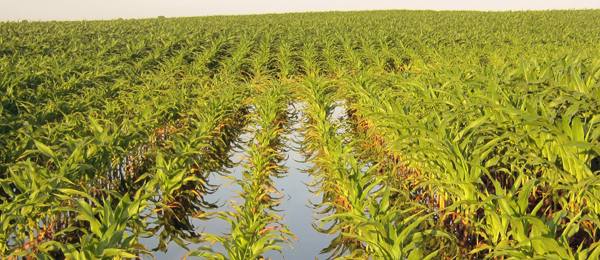news
![]()
June 1, 2013
For crops, shallow groundwater can be a boon or a bane

 Shallow groundwater levels, or where the water table is close to the earth’s surface, can be beneficial or detrimental to crops, depending on the weather conditions of a growing season and the texture of a field’s soil.
Shallow groundwater levels, or where the water table is close to the earth’s surface, can be beneficial or detrimental to crops, depending on the weather conditions of a growing season and the texture of a field’s soil.
Corn roots like soil with just the right balance of water and air space. Shallow groundwater can help keep the root zone moist.
In dry years, the moisture can help prevent water stress and enable successful yields. But in wet years, this extra water can drown corn roots and damage yields.
Using high resolution imagery, collected in partnership with Wisconsin Department of Natural Resources, WSC scientists were able to map out where within corn fields the crops were more sensitive to drought or to moisture stress.
These findings have improved WSC’s modeling of interactions between groundwater and plant water use, and show the importance of considering both above- and below-ground processes when studying crop growth.
A paper on the high resolution imagery by WSC team members Sam Zipper and Steve Loheide will be published later this year in Agricultural and Forest Meteorology under the title “Using evapotranspiration to assess drought sensitivity on a subfield scale with HRMET, a high resolution surface energy balance model.”


